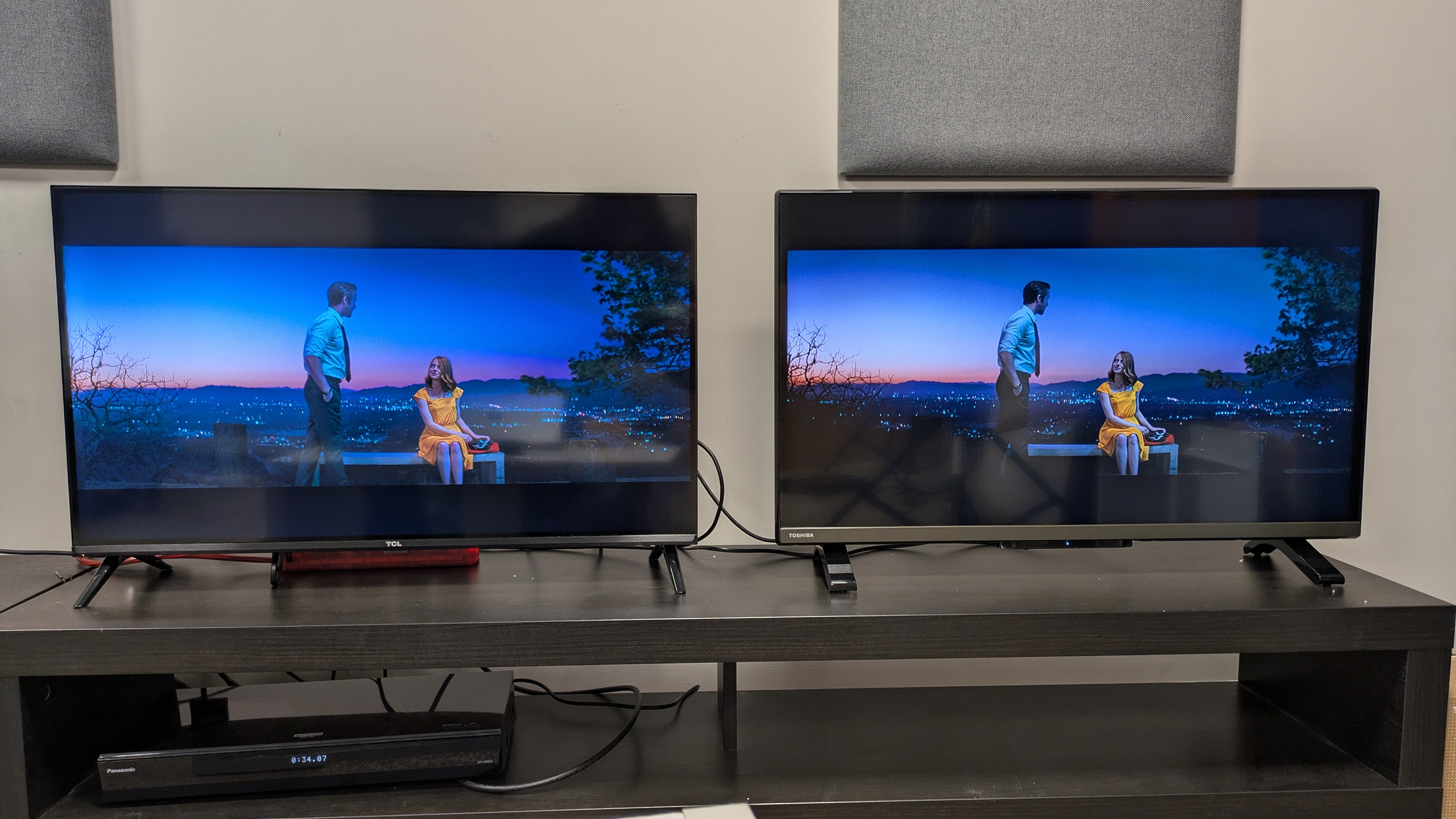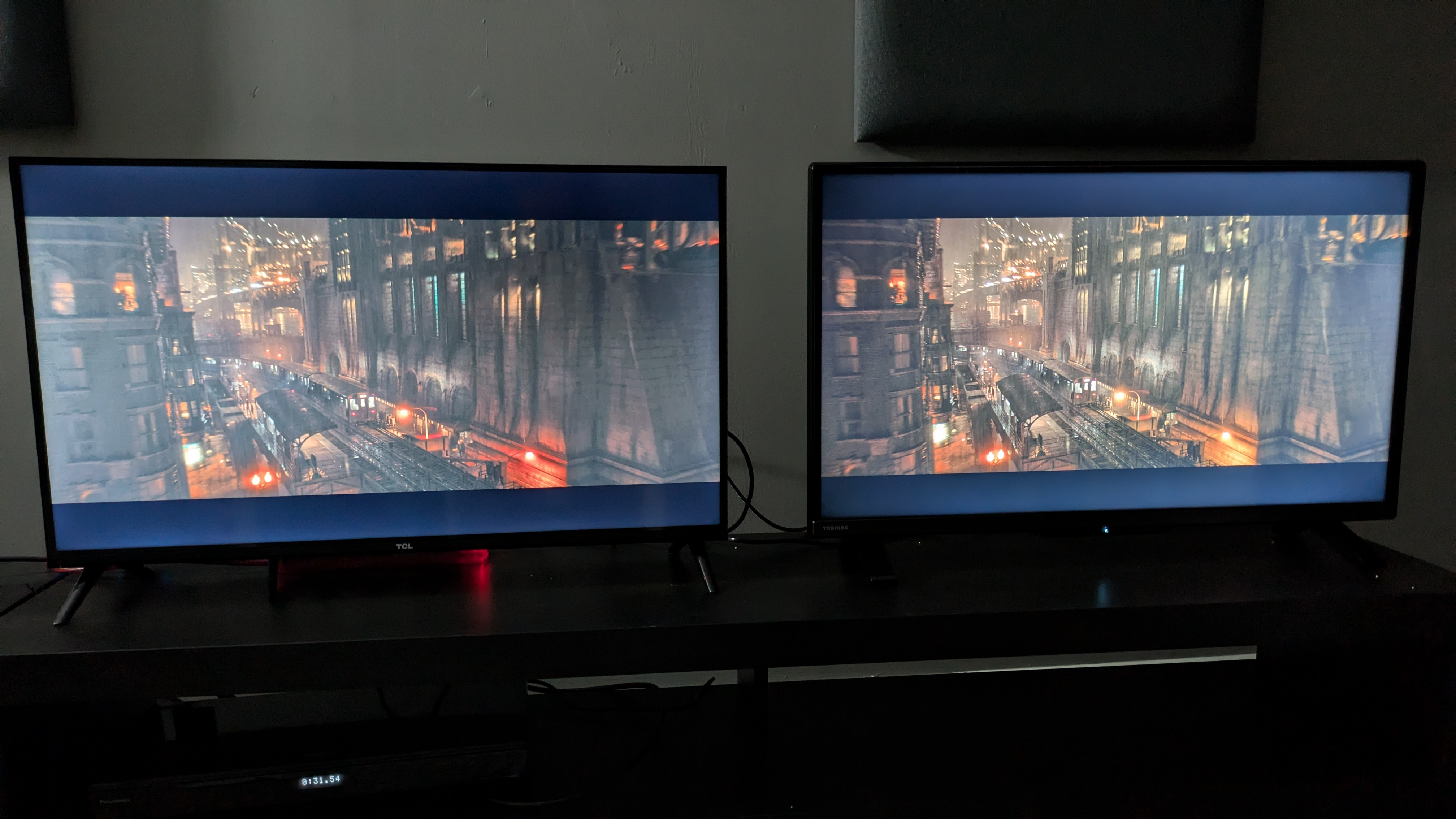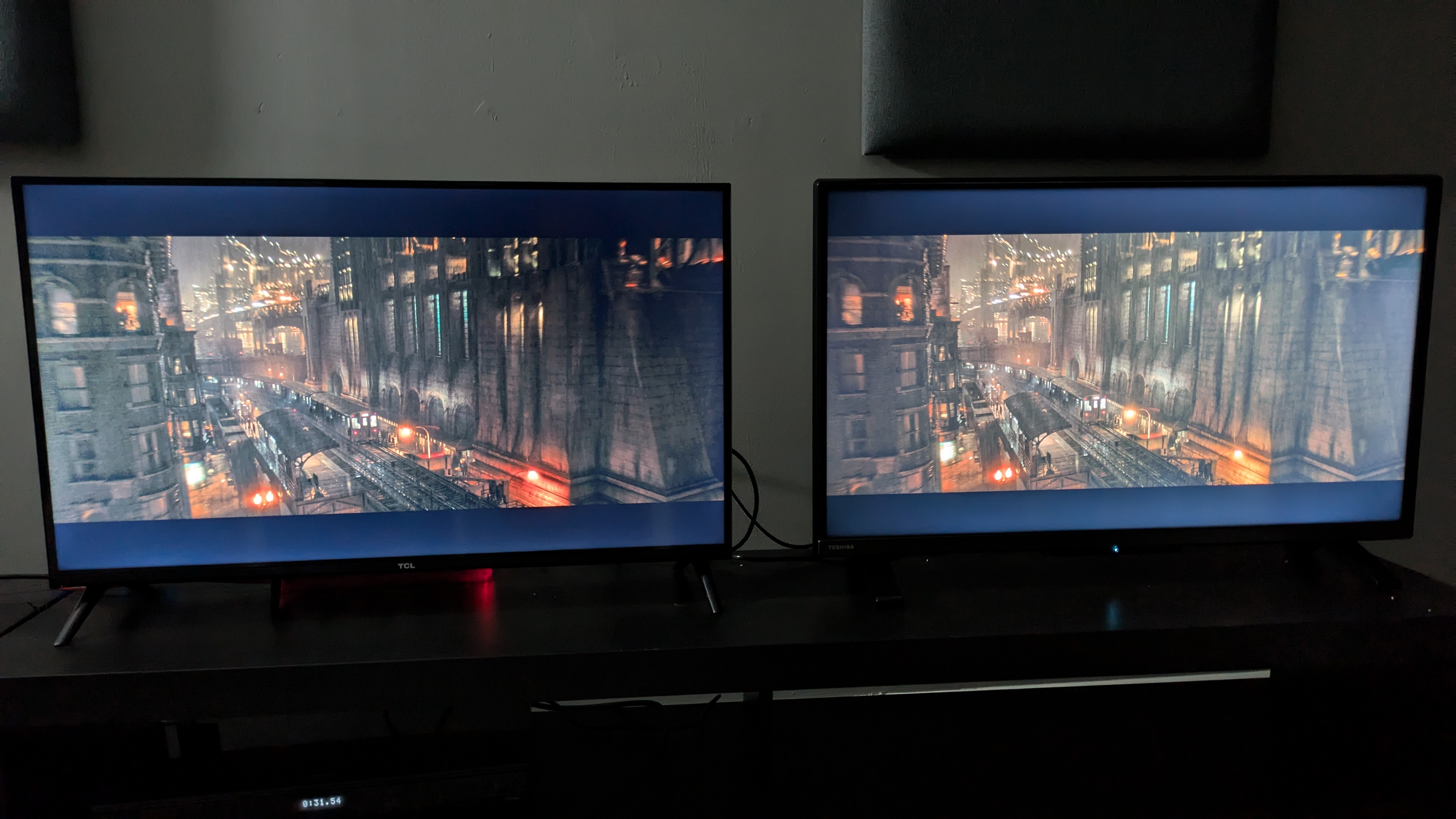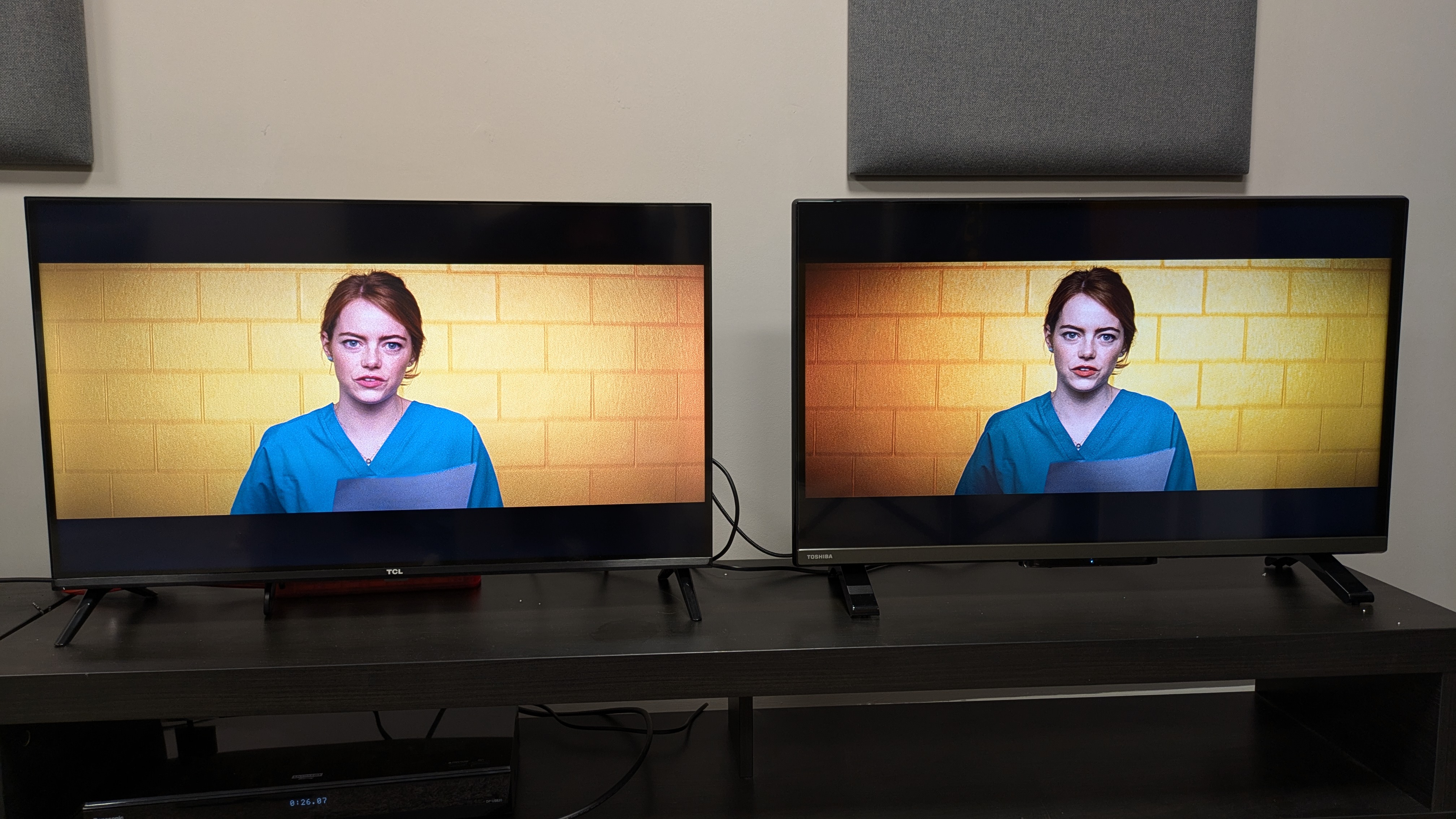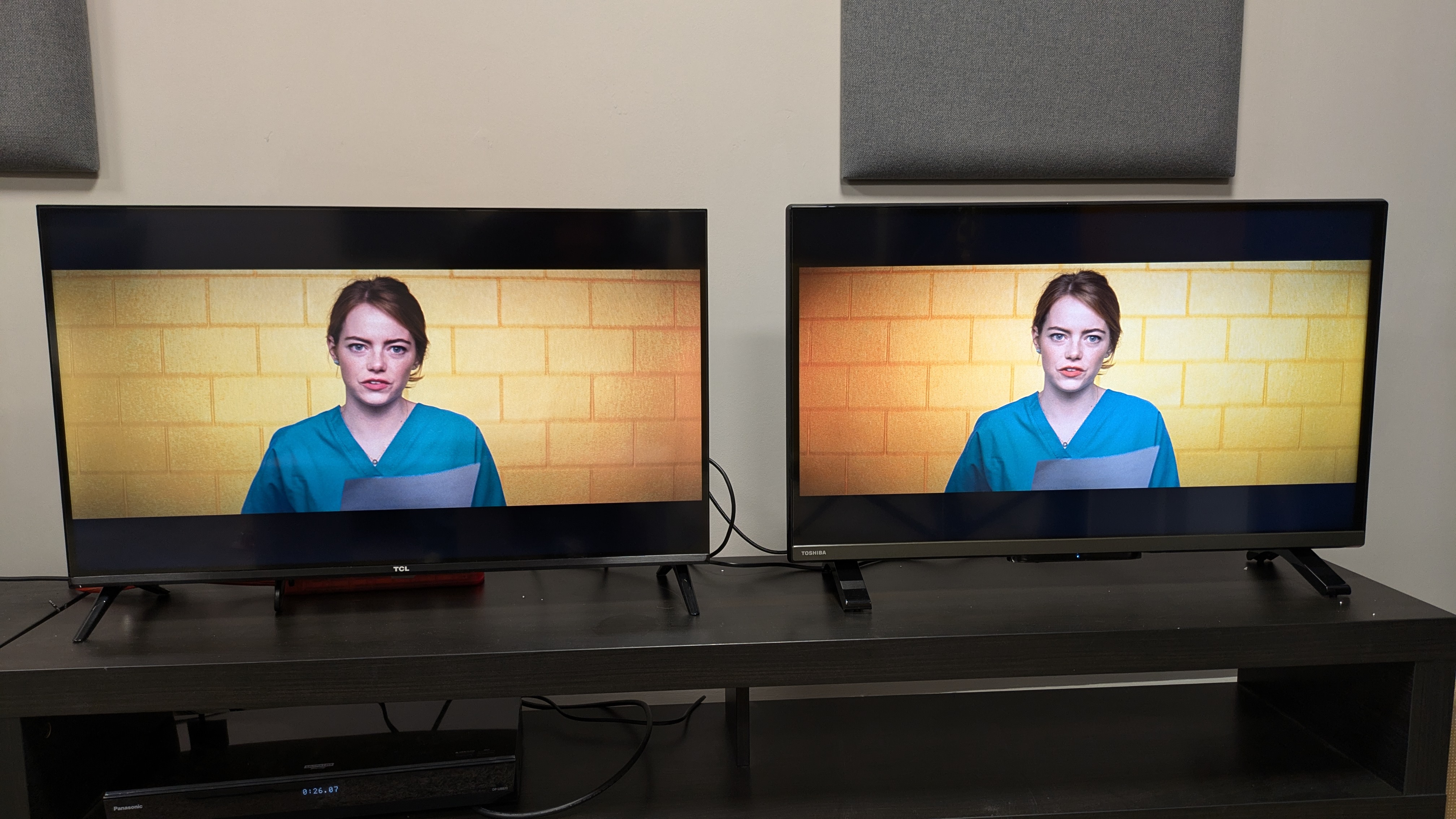When you find yourself looking for a new TV, it can be quite daunting when starting the search. There’s a lot of similarly priced sets with similar specs that all promise the same things as their rivals, but better.
It’s fair to say that when you’re looking at the best TVs, the more money you’re spending, the more research you’re likely to do. If you’re looking at two of the best OLED TVs – say the LG G4 and Samsung S95D – both of which cost over $2,000/£2,000 for the 65-inch model, you’re going to really take your time (as you should). When it comes to cheaper TVs, especially smaller ones, it’s common for people to opt for whatever fits the budget and looks the best on paper. Sometimes this goes well, but I’ve found this often isn’t the case.
32-inch TVs may seem small when you can get one of the best 85-inch TVs for amazingly affordable prices now, but for many people smaller TVs still serve a purpose, whether that be for the bedroom or kitchen, or just because you don’t want something big.
In my time testing and using some of the best 32-inch TVs, I’ve come to realise that despite very similar prices – a solid 32-inch TV will cost you between $130/£130 and $500/£400 for the more premium end – I’ve seen first-hand just how different smaller TVs can be from one another, much like larger sets. I obviously expected that this would be the case with the two ends of the spectrum, but not when they’re almost identical in price.
I recently put the 32-inch TCL S5400 and Toshiba LF2F53DB (which I’ll refer to as the LF2 from now on, for both your sake and my own) side-by-side. With only a £10 price gap – with the TCL costing £139 and the Toshiba costing £149 – I didn’t expect a great deal of difference between the two, especially for such a cheap price. I discovered however, that this was not the case.
It’s worth noting that neither of these sets are available outside the UK – the closest alternative for US readers is the TCL S3 and the Toshiba V35 but there are a number of other 32-inch sets from Vizio, Samsung, LG, Insignia, Amazon and more. I particularly recommend the LG 32LQ6300 as a great option in both the UK and US, and I recently gave the Samsung Q60D a good review, and that comes in a 32-inch option too.
A tale of two TVs
Table of Contents
I connected both TVs to an HDMI splitter to show the same image, which was being delivered by various Blu-ray discs played through the Panasonic DP-UB820, one of the best 4K Blu-ray players available.
I started with La La Land, an excellent movie for testing key elements of a TV’s performance: color, motion, contrast, and even sound. With both TVs set to their Movie picture presets – the one we generally find to be the most accurate for movie viewing in cheaper TVs – the Toshiba demonstrated brighter, more vivid and more natural colors. Mia’s yellow dress in the ‘A Lovely Night’ scene had more of a dynamic sheen to it on the Toshiba. In the same scene, the darker blue and purple tones representing the night looked more natural on the Toshiba as well.
Change picture modes however, and it was a different story. Viewing the same scenes but with both sets in Standard and the Toshiba’s contrast was aggressive, focusing on darker tones, with colors appearing more muted – whereas the TCL demonstrated seriously vibrant, glossy colors in comparison.
Moving onto something more challenging, I next viewed The Batman, a dimly lit movie, (mastered at 400 nits compared to the standard 1,000 nits) which is useful for testing black levels, shadow and contrast. I didn’t expect great things from either set due to their basic LED backlight and as expected there was a gray wash present with black tones taking on a lighter hue.
The Batman looked significantly better on the two TVs when they were in Movie mode, which means the Toshiba is the winner, right? Not entirely. While the Toshiba showcased better shadow detail – maintaining textures and details in clothing in dimly lit scenes such as the opening crime section – and had better and more natural brightness in Movie mode to elevate details, the TCL also showcased solid contrast and black levels, and with some exploration in the settings, I found it had some hidden tricks.
Trust the process(ing)
Delving into the TCL’s picture settings, I found the option named ‘Dynamic Contrast’ and I was surprised at just how effective this was for The Batman. Admittedly, the movie became even dimmer than before, but darker tones were brought more to the surface, giving the overall picture more depth and a better balance between dark and light tones. It also seemed to do a great job limiting the graying effect of darker tones, giving the impression of a higher-quality backlight.
There was a ‘Local Dimming’ feature, something we’ve found can be a real ally to some of the cheaper best mini-LED TVs such as the Hisense U7N, and this further improved the contrast and balance of lighter tones in the dimmer scenes.
Looking further into both TVs, I was surprised at the amount of processing and picture features on offer at such a budget price – some for better, some for worse. ‘Dynamic Color’ on the TCL added more vibrancy and sharpness to colors which worked well in movies like Ready Player One, but ended up a bit oversaturated in La La Land – though some may prefer this sharp look.
While the same can’t be said for sound – both TVs were pretty limited in their options – the TCL stood head and shoulders above the Toshiba, providing a good sense of movement, bass and placement for a smaller screen in its Movie sound mode, especially when compared with the narrow, tinny nature of the Toshiba.
Conclusion
But it was the amount of processing options in these very cheap, small TVs that jumped out to me. With a bit of exploring and a bit of tweaking, a genuinely good TV can be found in these smaller sets. It also showed that while on paper these two sets were very similar and their prices were near identical, these were two very different TVs.
Of course these TVs are on the cheaper end of the 32-inch market and will have their shortcomings – a section of the Spears & Munsil demo footage we use to test TVs showed the Toshiba’s colors could be inconsistent and that the TCL’s motion was imperfect – but it proves that not all cheap TVs are created equally, and how you spend your money will make a difference, just like in the expensive models. Sacrifices are made in budget TVs, but don’t assume you’ll need to settle for bargain-bin levels of quality.


